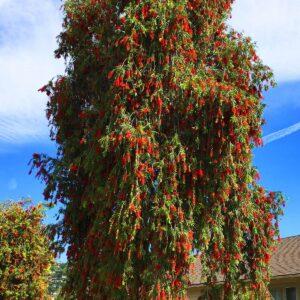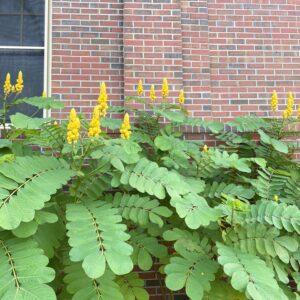Weeping Willow tree scientifically known as *Salix babylonica*, is a graceful, fast-growing deciduous tree known for its long, drooping branches and soft, narrow leaves. Native to China, it has become a beloved ornamental tree around the world, especially near water bodies.
**Description**
– Height: Typically grows 10 to 25 meters tall
– Canopy: Broad, rounded, and weeping, with branches that often touch the ground
– Leaves: Narrow, lance-shaped, light green above and silvery underneath; turn golden yellow in autumn
– Flowers: Small, yellowish-green catkins that appear in early spring
– Bark: Grayish-brown, deeply furrowed with age
**Growing Conditions**
– Sunlight: Prefers full sun but tolerates partial shade
– Soil: Moist, well-drained soil; adapts to loamy, sandy, or clay soils
– Watering: Requires consistent moisture, especially when young; thrives near ponds, rivers, or wetlands
– Climate: Hardy in USDA zones 4 to 10; tolerates cold winters and hot summers
**Care and Maintenance**
– Prune in late winter or early spring to maintain shape and remove weak or damaged branches
– Avoid planting near underground pipes or foundations due to aggressive root systems
– Mulch around the base to retain moisture and suppress weeds
– Monitor for pests like aphids and diseases such as willow blight or cankers
**Uses**
– Ornamental: Popular in parks, large gardens, and along water edges for its dramatic appearance
– Environmental: Helps prevent soil erosion along riverbanks
– Wildlife: Provides shelter and nesting sites for birds; branches were historically used for basket weaving
The Weeping Willow is admired for its poetic, flowing form and is often associated with themes of reflection and tranquility in art and literature. While beautiful, it requires space and careful placement due to its size and root behavior.”





Reviews
There are no reviews yet.